My wife shared this with me and I was quite impressed; partially because it’s a clever simple idea, but also because I have a soft spot in my heart for these already struggling people that get pounded again and again in these off the beaten path locations. I spent several years in the Philippines so the storm that ravaged the area around Tocloban was especially personal. I did add some simple instructional pictures at the bottom pulled straight from their website. Once again, there is no financial profit in this for me, I just like sharing a good idea or product when I see it because it could make a difference for someone I care about.
Jon
Anna Stork and Andrea Sreshta were graduate students at Columbia University’s School of Architecture in 2010 when a devastating earthquake struck Haiti. In one of their classes, they were assigned to develop a new innovation to help with disaster relief. Many students focused on designing shelters but, after speaking to a relief worker in Haiti, the two discovered that an often-ignored need following disasters was access to light. The pair focused on designing a solar-powered lantern and spent several years refining their design. Now their inflatable, waterproof, and solar-powered light — called the LuminAID Solar Light — is being distributed to those in need in several countries.
Their unique lantern is designed to meet the needs of people in the aftermath of a disaster but many outdoor enthusiasts have also become fans of its innovative design (it even made National Geographic’s 2013 Gear of the Year list). After being charged in the sun for six hours, the LED light provides up to 16 hours of light — a feature that not only makes it more eco-friendly but essential in emergency situations when batteries are hard to find. Due to its inflatable design, it also provides diffuse light like a lantern so it can be used to illuminate a room or tent. Moreover, since disasters often involve water, Stork and Sreshta made it waterproof and able to float.
They also made sure to add a sturdy handle to the light because, as Stork explains, “We heard that in the tent cities people really wanted something they could easily take to the latrine at night, so it was very handy to have a handle to carry it around.” And, because they can be packed flat, 50 LuminAID lights can be shipped in the same space needed for 8 conventional flashlights — an especially significant difference when humanitarian organizations are sending relief aid in large volumes.
When the two young social entrepreneurs founded their company, LuminAID, they used a crowdsourced fundraising campaign to raise the capital needed for their first batch of 1,000 lights. They have since created a Give Light Project where for each light purchased on their website, the buyer can donate a light to one of four project sites. Over the past year, they have distributed more than 5,000 lights across projects in 15 countries and their current campaign supports NGO partners working in Haiti, Ghana, India, and the Philippines. As they grow, they hope to expand their reach by working with large, international aid organizations.
As the LuminAID has gone from class project to a real relief tool, the pair are more driven than ever to get it into the hands of those in need during disasters. As Sreshta explains, “conditions once the sun goes down can be very unsafe, especially for women and children. After the earthquake in Haiti, there were many cases of violence, kidnapping and rape. Light is a basic human need, but [conventional technology] costs too much to ship and pack as part of disaster relief.” Now, thanks to the work of these two creative innovators, more people will have access to the gift of light during the darkest of times.
To learn more about Anna and Andrea’s invention and how to buy/donate your own LuminAID, visit their website at http://www.luminaid.com/. They can also be ordered via Amazon.com at http://amzn.to/1cC4LcA
For a wonderful book about female innovators and inventors throughout history, check out “Girls Think of Everything: Stories of Ingenious Inventions by Women” for readers 8 to 13 at http://www.amightygirl.com/girls-think-of-everything
Or, for younger readers age 4 to 9, we highly recommend “Rosie Revere, Engineer” about an budding young inventor at http://www.amightygirl.com/rosie-revere-engineer
A Mighty Girl also has a section highlighting stories that feature poverty and hardship as a significant theme. Such stories provide opportunities for parents to discuss these topics with their children while also helping to foster children’s empathy for people living in difficult circumstances. Learn more at http://www.amightygirl.com/books/social-issues/poverty-hardship
And, if you’re looking for ways to encourage your children to become the next engineering and technology innovators, visit A Mighty Girl’s STEM toy section at http://www.amightygirl.com/toys/toys-games/science-math
Charge in sun for 6-7 hours for up to 16 hours of LED light.
Inflate using valve. The inflation diffuses light like a lantern and protects eyes from any glare from the LED light source.
Illuminate with power switch once for LOW and twice for HIGH.
The LuminAID is water-resistant and can float.

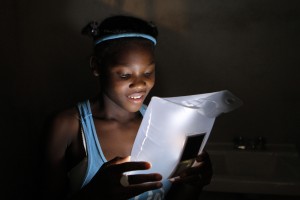
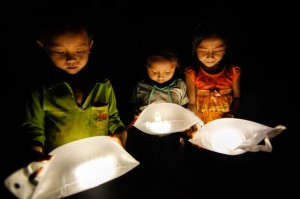
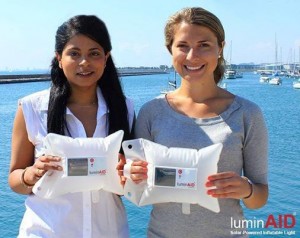
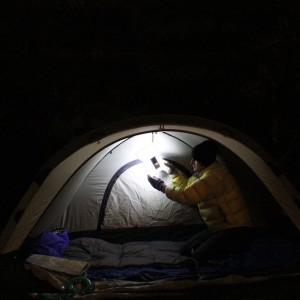
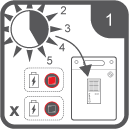

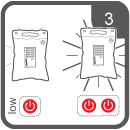
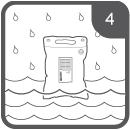
Leave a Reply